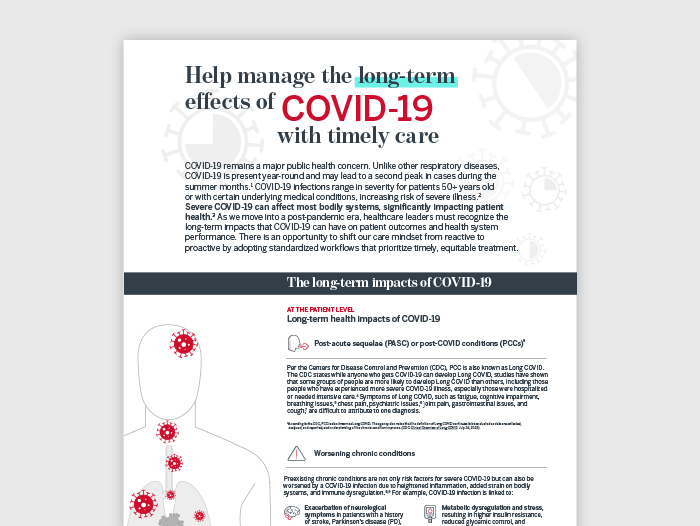Auto logout in seconds.
Continue LogoutCDC on Thursday added BA.2.86, nicknamed "Pirola," to its coronavirus variant watchlist after the World Health Organization (WHO) did the same. And while scientists are paying close attention to the heavily mutated variant, many say there's no cause for public concern yet.
What is Pirola?
As of Aug. 19, there have only been seven cases reported by CDC of BA.2.86. Those seven cases have been detected in the United States, Denmark, Israel, and the United Kingdom.
The Michigan Department of Health and Human Services announced that one case of BA.2.86 was detected in Washtenaw County last week, and reportedly impacted an older adult who showed "mild" symptoms that didn't immediately require hospitalization.
According to GISAID, an open global genome sequencing database, BA.2.86 has over 30 mutations, more than any other variant currently circulating, and WHO classified the variant as having a "large number of mutations."
Specifically, BA.2.86 carries many changes to its spike protein. However, researchers have not yet determined whether the new variant could have a higher transmission rate than other variants, nor whether it could produce unique symptoms.
Scientists say no need for concern (yet)
Adam Lauring, a virologist and infectious disease physician at the University of Michigan in Ann Arbor, noted the emergence of BA.2.86 is like the early days of the omicron vriant in late 2021, where scientists noticed a strange lineage that quickly spread throughout the world. "There's a little bit of déjà vu all over again," Lauring said.
"Just like Omicron was a little out of left field, this BA.2.86 is a little out of left field," said Ashish Jha, a public health researcher at Brown University and former White House COVID-19 Response Coordinator. "There is enough here to get us all to start paying attention."
However, more waves of COVID-19 and rollouts of booster vaccines mean that global immunity to the virus is higher than it ever has been before, and most scientists don't believe BA.2.86 will have the same impact as omicron.
"There's a good reason to think it won't be like the Omicron wave, but it's early days," Lauring said.
Since many of BA.2.86's mutations are in regions of the spike protein that are targeted by humans' antibodies, there's a good chance the variant could escape some of the antibodies triggered by past infections and vaccine boosters, according to Jesse Bloom, a viral evolutionary biologist at the Fred Hutchinson Cancer Center.
Scientists have also noted the geographical distribution of BA.2.86. The variant has appeared in four countries and none of the cases appear to be linked, suggesting the variant could already be fairly widespread, Bloom said. "It's got to have been transmitting a fair amount," he said.
Bloom added that he's especially interested in seeing how well BA.2.86 can evade antibodies triggered by a recent infection with XBB.1.5, since the latest COVID-19 booster vaccines are going to be based on that variant.
"If something like [BA.2.86] became widespread. I think you'd want to start thinking about updating the vaccine," he said.
However, even if BA.2.86 becomes widespread and is able to evade antibodies better than previous variants, other forms of immunity are likely to protect most people from getting seriously ill, Bloom said.
"I don't think anybody needs to be alarmed by this," he said. "The most likely scenario is that this variant fizzles out, and in a month, nobody other than people like me even remember that it existed." (Walrath-Holdridge, USA Today, 8/21; Callaway, Nature, 8/21)
Download our planning guide to test your hospital's ability to respond to a novel coronavirus spread.
Don't miss out on the latest Advisory Board insights
Create your free account to access 1 resource, including the latest research and webinars.
Want access without creating an account?
You have 1 free members-only resource remaining this month.
1 free members-only resources remaining
1 free members-only resources remaining
You've reached your limit of free insights
Become a member to access all of Advisory Board's resources, events, and experts
Never miss out on the latest innovative health care content tailored to you.
Benefits include:
You've reached your limit of free insights
Become a member to access all of Advisory Board's resources, events, and experts
Never miss out on the latest innovative health care content tailored to you.
Benefits include:
This content is available through your Curated Research partnership with Advisory Board. Click on ‘view this resource’ to read the full piece
Email ask@advisory.com to learn more
Click on ‘Become a Member’ to learn about the benefits of a Full-Access partnership with Advisory Board
Never miss out on the latest innovative health care content tailored to you.
Benefits Include:
This is for members only. Learn more.
Click on ‘Become a Member’ to learn about the benefits of a Full-Access partnership with Advisory Board
Never miss out on the latest innovative health care content tailored to you.


